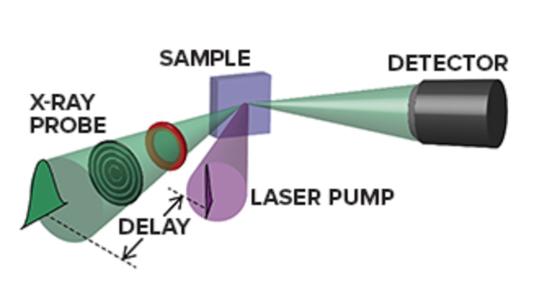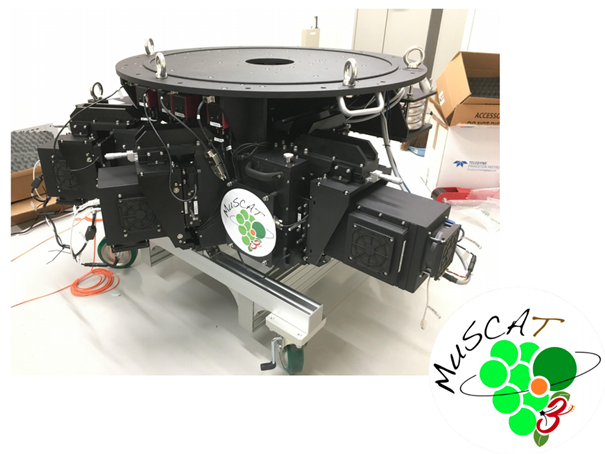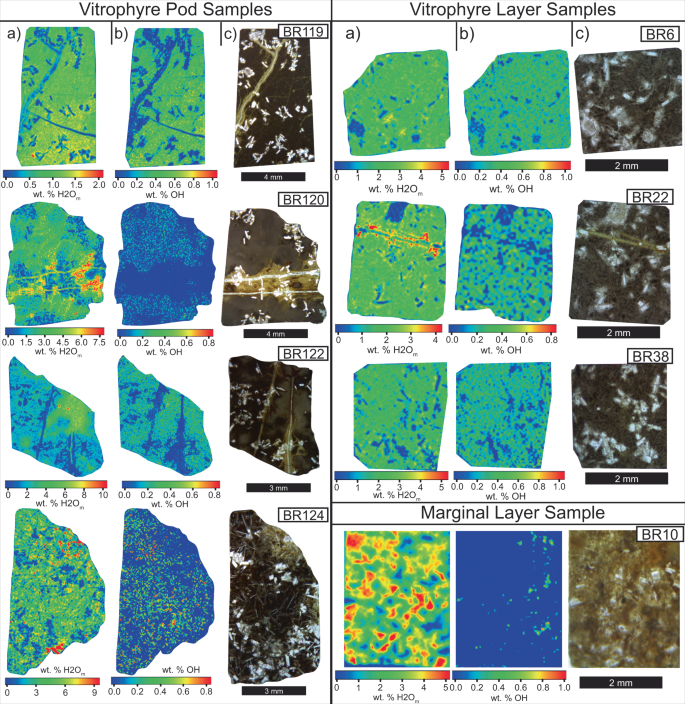新しい成果は、ナノスケールでの相転移に関する情報を提供するものです。 New results give information about phase transitions at the nanoscale.
2022-09-07 アルゴンヌ国立研究所(ANL)

A schematic of the experimental X-ray snapshot setup. (Image by Haidan Wen/Argonne National Laboratory.)
物質の振る舞いの進化を時間的・空間的に正確に目撃できるようになったことで、多くの磁性材料を含む、相変化を起こす特定の物質における異常な振る舞いが明らかになった。
研究者らは、鉄ロジウム化合物の相転移を調べる中で、化合物の構造が2つの磁気的配置の間で変化する様子を観察する方法を見出した。
この磁性相を利用すれば、従来のデータ記憶装置よりも高速でエネルギー効率の高い、新しいタイプの磁気記憶装置を作ることができる。
磁気メモリをコンパクトにするためには、相転移を精密に操作する必要がある。その1つが、局所的な温度変化である。
磁気ビットを加熱することで、熱アシスト磁気記録と呼ばれる、より少ないエネルギー消費で情報を符号化するための再構成を行うことができる可能性がある。
特別な材料、鉄ロジウムについて興味深いことの1つは、この種のアプリケーションに使用できる温度で相転移を起こすことである。しかし、操作を行うためには、より優れた『カメラ』が必要である。この新しく開発された技術を使って研究することが重要なのである。
<関連情報>
- https://www.anl.gov/article/advanced-microscope-techniques-could-pave-way-for-improved-computer-memories
- https://www.pnas.org/doi/abs/10.1073/pnas.2118597119
X線ナノ回折イメージングによる超高速相転移の明瞭なナノスコピックダイナミクスの解明 X-ray nanodiffraction imaging reveals distinct nanoscopic dynamics of an ultrafast phase transition
Youngjun Ahn, Mathew J. Cherukara , Zhonghou Cai, Michael Bartlein, Tao Zhou, Anthony DiChiara, Donald A. Walko, Martin Holt, Eric E. Fullerton, Paul G. Evans and Haidan Wen
Proceedings of the National Academy of Sciences Published:May 6, 2022
DOI:https://doi.org/10.1073/pnas.2118597119
Significance
Phase transitions, the changes between states of matter with distinct electronic, magnetic, or structural properties, are at the center of condensed matter physics and underlie valuable technologies. First-order phase transitions are intrinsically heterogeneous. When driven by ultrashort excitation, nanoscale phase regions evolve rapidly, which has posed a significant experimental challenge to characterize. The newly developed laser-pumped X-ray nanodiffraction imaging technique reported here has simultaneous 100-ps temporal and 25-nm spatial resolutions. This approach reveals pathways of the nanoscale structural rearrangement upon ultrafast optical excitation, different from those transitions under slowly varying parameters. The spatiotemporally resolved structural characterization provides crucial nanoscopic insights into ultrafast phase transitions and opens opportunities for controlling nanoscale phases on ultrafast time scales.
Abstract
Ultrafast first-order phase transitions exhibit distinct transition pathways and dynamical properties that are not accessible during quasi-equilibrium transitions. Phenomena arising at the ultrafast timescale are important for understanding the transition mechanisms and in applications using the fast switching of electronic properties or magnetism. These transitions are accompanied by nanoscale structural dynamics that have been challenging to explore by optical or electronic transport probes. Here, X-ray nanodiffraction imaging shows that the nanoscale structural dynamics arising in ultrafast phase transitions differ dramatically from the transitions under slowly varying parameters. The solid-solid phase transitions in a FeRh thin film involve concurrent structural and magnetic changes and can be sensitively probed by monitoring their diffraction signatures following femtosecond optical excitation. Time-dependent nanodiffraction maps with 100-ps temporal and 25-nm spatial resolutions reveal that the preexisting nanoscale variation in phase composition results in spatially inhomogeneous changes of phase fraction after ultrafast optical excitation. The spatial inhomogeneity leads to nanoscale temperature variations and subsequent in-plane heat transport, which are responsible for spatially distinct relaxation pathways on nanometer length scales. The spatial gradients of the phase composition and elastic strain increase upon excitation rather than exhibiting the decrease previously reported in quasi-equilibrium transformations. Long-range elastic interactions thus do not play significant roles in the ultrafast phase transition. These microscopic insights into first-order phase transitions provide routes to manipulate nanoscopic phases in functional materials on ultrafast time scales by engineering initial nanoscale phase distributions.



